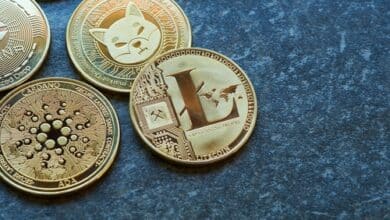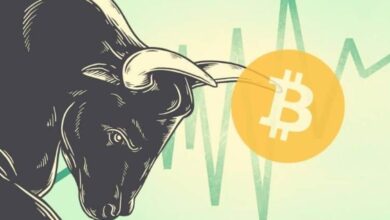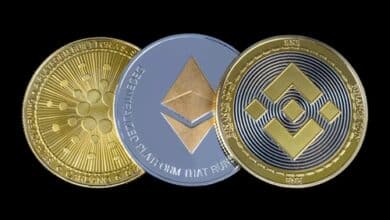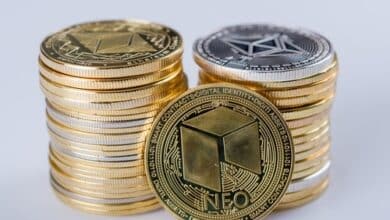Discover the Intricate Mechanism Behind Federal Reserve’s Money Creation

If you’re curious about how the Federal Reserve generates currency, here’s an explanatory guide to shed light on its method of money production.
In the United States, the Federal Reserve frequently called the Fed exerts a massive influence over the country’s total money supply. This central banking authority carries a range of vital duties, including the meticulous supervision of the total circulating amount of US dollars and their equivalents. To grasp this process fully, let’s delve into the behind-the-scenes operations of the Federal Reserve and explore how it forms and supervises the money supply. This procedure extends well beyond simply manufacturing physical banknotes.
Objectives and Responsibilities of the Federal Reserve
The Federal Reserve operates as the United States’ core banking system. Its primary responsibility centers on regulating US dollars’ overall quantity and equivalents. In this capacity, it executes strategies that generate or remove billions of dollars daily.
The physical production of money does occur, supported by the US Department of the Treasury, but a significant portion of the nation’s monetary supply is digital. Commercial banks play a pivotal part in the genesis of money as they extend new loans to the broader economy.
The goals and duties of the Federal Reserve encompass the following:
- Monetary policy-making: The Fed formulates and implements monetary strategies to sustain stable prices and foster optimal employment. It employs a variety of tools, including adjustments to interest rates and management of the money supply, to impact economic circumstances and regulate inflation.
- Oversight and regulation: The Fed supervises banks and other financial entities to guarantee the stability and dependability of the banking system. It introduces and enforces rules that protect consumers, maintain the financial system’s integrity, and reduce systemic threats.
- Preservation of financial system stability: Ensuring the comprehensive stability of the financial system is a crucial obligation of the Federal Reserve. It observes and evaluates possible risks and weaknesses in financial markets, takes necessary steps to mitigate them, and serves as a final source of loans during periods of financial difficulty.
- Currency management: The task of issuing and managing the country’s currency, which includes the production, dissemination, and destruction of physical money and coins, falls under the Federal Reserve. Its objective is to maintain the integrity and public confidence in the US dollar as a trustworthy means of exchange.
- Economic investigation and assessment: The Federal Reserve has a fundamental role in conducting economic research and analysis. Through such initiatives, it acquires insights into the economy’s condition, identifies risks, and guides policy choices. The Fed releases reports, economic predictions, and research papers that enhance the comprehension of monetary and economic issues.
- Provision of financial services to banks and the government: These services comprise lending to banks, holding reserves for deposit-taking institutions, regulating the federal funds rate (the interest rate at which banks lend to each other on a short-term basis), and managing the accounts of the US Treasury.
Creating Money
The key mechanism by which the Federal Reserve generates money primarily consists of boosting the credit within banks’ reserves rather than creating more physical currency. This type of credit is akin to the one that gets transferred into your bank account directly from your place of work.
The task of overseeing monetary policy falls under the purview of the Federal Open Market Committee (FOMC), which functions as the executive branch of the Federal Reserve. When the Fed augments credit, it enacts a comprehensive monetary strategy, bolstering the money supply available for lending, expenditures, and investments. Such a surge in recognition is crucial for overcoming economic downturns. The Federal Reserve often employs the federal funds rate to implement this monetary policy.
The process of “money printing” by the Federal Reserve is accomplished by reducing the federal funds rate. Banks must maintain federal reserves overnight, although they can borrow these reserves from fellow banks if needed. The interest rate applied to this borrowing process is called the “fed funds rate.” By trimming down the target for the federal funds rate, the FOMC empowers banks to borrow federal funds at a lower expense, allowing them to have a more significant amount of money for lending purposes as they shell out less interest.
It’s important to acknowledge that traditionally, the Federal Reserve imposes a 10% reserve requirement on the banks’ deposits. However, amid the recession triggered by the COVID-19 outbreak, this requirement was reduced to nil in March 2020. Upon the FOMC’s lowering of the fed funds rate target, banks aim to loan every dollar they’re not compelled to retain as reserves. This, in turn, prompts a reduction in their other interest rates. As capital becomes more affordable, enterprises and investors are motivated to borrow, assuming the projected returns outpace the current interest rate. This influx of liquidity acts as a catalyst for economic expansion, mirroring the impact of an increase in the overall money supply.
Alternative Tools Utilized by the Federal Reserve
The Federal Reserve uses a method known as open market operations as part of its policy toolbox. It entails buying various securities, such as US Treasuries, from member banks, and in return, it provides credit. This unique mechanism allows central banks to create credit out of nothing, similar to minting money.
Amid the chaos of the COVID-19 crisis in 2020, the Federal Reserve notably increased the use of open market operations via a policy known as quantitative easing (QE). On March 15, 2020, the Federal Reserve made public its plan to buy $500 billion in US Treasuries and $200 billion in mortgage-backed securities over the subsequent months.
Soon after, on March 23, the Federal Open Market Committee (FOMC) broadened the QE purchases without setting explicit limits. Consequently, the Fed’s balance sheet skyrocketed to an astounding $7 trillion by May 18.
Moreover, the Federal Reserve has a unique capability within its monetary toolbox beyond simple currency creation and destruction – the unique ability to convert US debt into a monetizable asset. During US Treasury auctions, when willing buyers seek after the country’s debt, the Federal Reserve often emerges as one of these strong buyers. However, instead of typically trading the acquired Treasuries, the Fed prefers to keep them securely within its balance sheet. Even though the Treasury has a responsibility to reimburse the Fed eventually, the Federal Reserve helps the federal government by providing additional funds for use in the meantime.
This strategy used by the Fed involves removing these Treasuries from the market. Consequently, the decreased supply of Treasuries boosts the value of the remaining bonds. This increased value allows the Treasury to lure buyers with lower interest rates. As a result, the lowered yield leads to a reduction in interest rates on US debt. The government can use fewer resources towards loan repayments with reduced interest rates. This freed-up resource can be channeled toward supporting other vital programs and initiatives.
Printing Money
The Bureau of Engraving and Printing (BEP) is tasked with the vital responsibility of creating US currency and securities. It artfully combines unique security features, distinct patterns, dedicated materials, and exceptional artistry to manufacture money that is a formidable challenge to counterfeiters while encapsulating the US’s prestige, resilience, and undeniable identity.
Consequently, each component involved in the production of the currency is meticulously planned to produce an unmistakably American financial instrument. The BEP uses detailed designs with complex motifs, illustrative drawings, and national symbols that epitomize the essence of the US. These visual components augment the visual charm and aid in the immediate identification and distinction between real currency and fraudulent imitations.
To bolster its anti-counterfeiting measures, the BEP harnesses particular types of paper and ink known for their resistance to counterfeiting. A significant advancement in security was made in 2003 when subtle background colors were added to the currency. These understated tones add another protective layer, making it harder for counterfeiters to duplicate legitimate bills precisely. Moreover, advanced elements such as security threads and watermarks are delicately incorporated into the paper for bills of $5 and higher, increasing their resistance to counterfeiting attempts.
On the front of the currency, there’s an impressive use of color-shifting ink, adding another layer of security. This ink has a distinctive feature that changes color when viewed from different perspectives, thus stumping counterfeiters and underscoring the notes’ authenticity. The $100 bill is a prominent illustration of innovation, with a striking 3D security ribbon that not only discourages counterfeiters but also intrigues onlookers with its visual illusion.
After the exhaustive process of designing, creating, and embedding these intricate security features, the BEP conducts a final review to guarantee the utmost standards of quality and authenticity. The painstakingly produced currency is then delivered to the Federal Reserve, the country’s central bank. Holding the reins of the country’s money supply, the Federal Reserve disseminates this securely safeguarded currency throughout the nation, fostering economic solidity and enhancing confidence in the US monetary system.
Bottomline
The method employed by the Federal Reserve to produce money is more complex than merely minting coins or printing banknotes. Indeed, physical cash forms a part of the total money in circulation, but the actual procedure of generating money primarily centers around a theory known as “expansion of the monetary base” or “money generation through open market maneuvers.”
Significantly, the Federal Reserve holds the power to regulate the total money circulating in the market, which in turn aids in economic management and inflation stability. One of the strategic methods it utilizes to manipulate the money in circulation involves open market operations. This method involves openly buying and selling government financial instruments, like Treasury bonds, in the market.
Moreover, it’s critical to emphasize that the Federal Reserve’s capacity to create money is limited and random. The institution operates within a set of laws, rules, and guidelines designed to preserve price stability, maximize job opportunities, and stimulate the economy’s growth.
Tokenhell produces content exposure for over 5,000 crypto companies and you can be one of them too! Contact at info@tokenhell.com if you have any questions. Cryptocurrencies are highly volatile, conduct your own research before making any investment decisions. Some of the posts on this website are guest posts or paid posts that are not written by Tokenhell authors (namely Crypto Cable , Sponsored Articles and Press Release content) and the views expressed in these types of posts do not reflect the views of this website. Tokenhell is not responsible for the content, accuracy, quality, advertising, products or any other content or banners (ad space) posted on the site. Read full terms and conditions / disclaimer.





